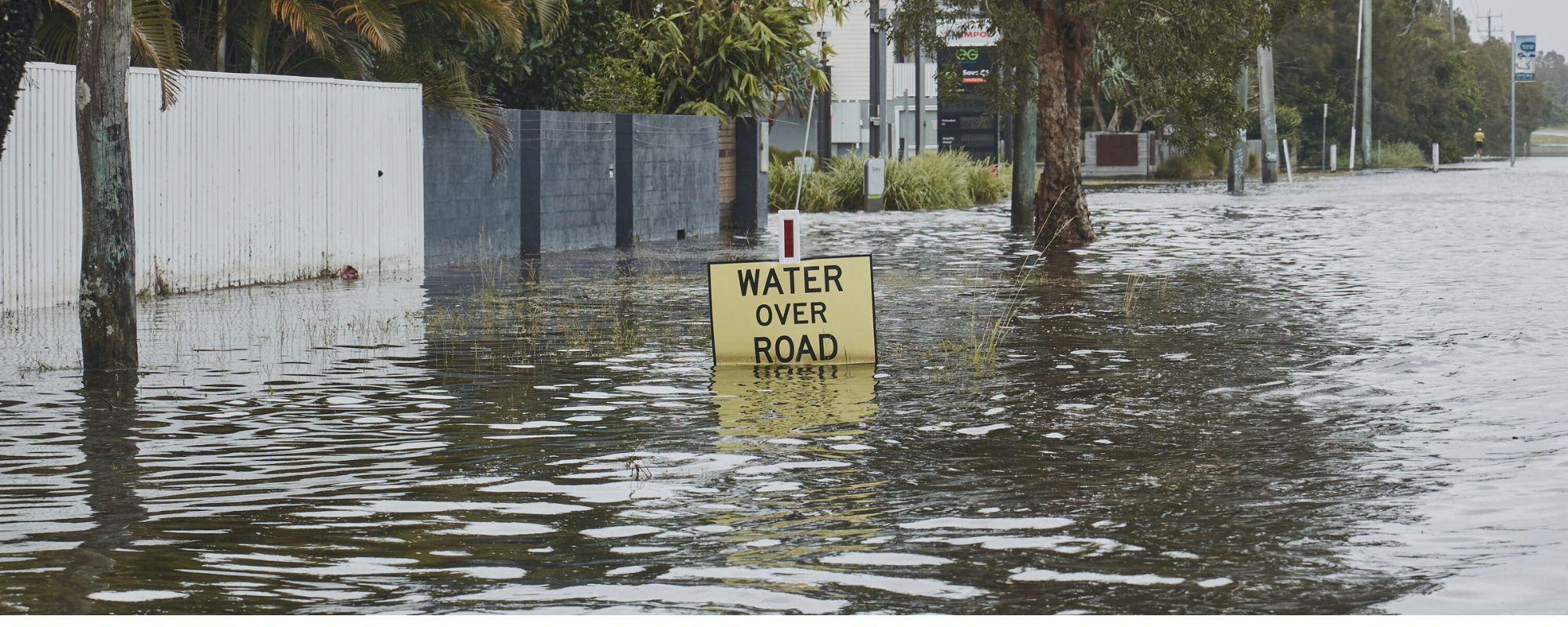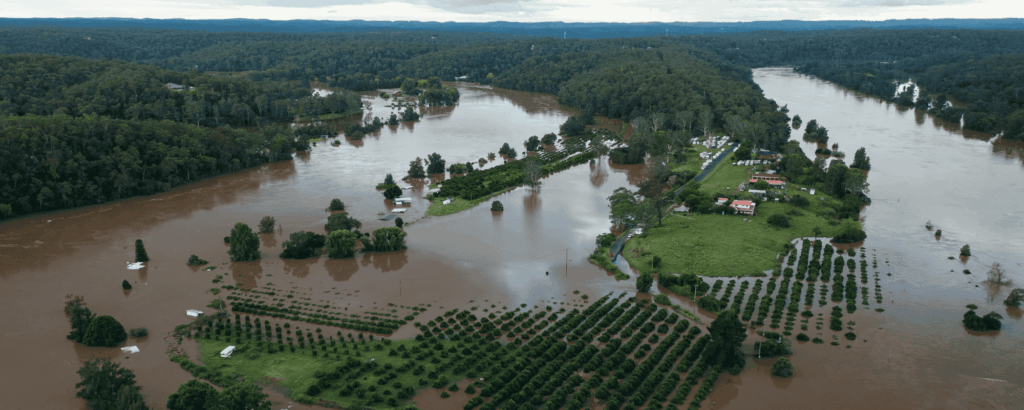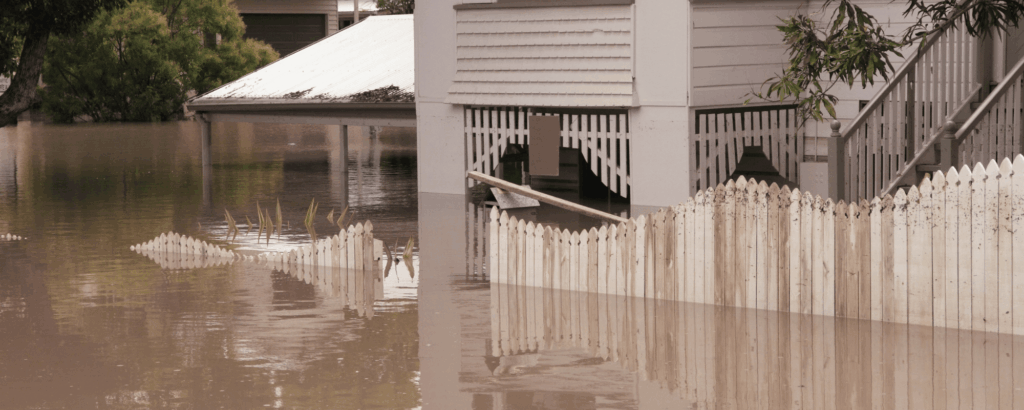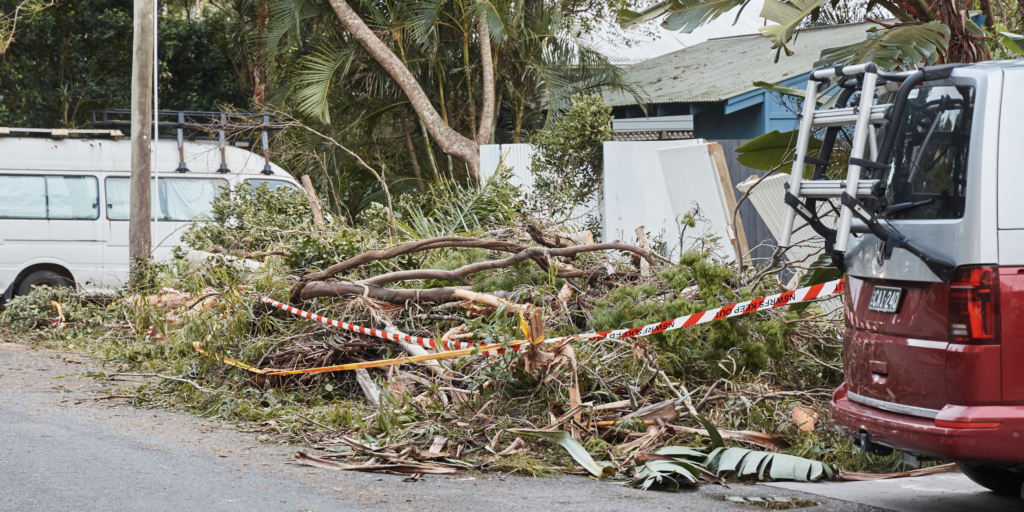Setting Australia’s 2035 climate target is one of the most important decisions the government has made. In choosing how rapidly we cut climate pollution over coming years we are determining exactly how dangerous our future becomes. So, is this target good enough? How will it affect Australians? And what happens next?
This rapid analysis explains Australia’s 2035 climate target, where it came from, and what it means for our future.
What is a climate target, and why do we need one?
Climate pollution from burning coal, oil and gas has formed a thick blanket of heat-trapping gases around the world. The world has already heated by 1.3ºC above pre-industrial levels. The excess heat is driving more ferocious and frequent fires, floods and heatwaves, rising sea levels, and more volatile and unpredictable weather. The future scale and severity of the climate crisis will depend on how quickly and deeply we slash global climate pollution.
Climate targets are an opportunity to keep Australians safer from climate impacts, by setting a goal for cutting our climate pollution further and faster. Australia has already committed to reducing climate pollution to net zero by 2050, and is targeting a 43% reduction in our climate pollution by 2030 (compared to 2005 levels). Now, the Albanese Government has set our 2035 target.
What makes a strong climate target?
To keep Australians safer from climate impacts, we need to set targets that cut climate pollution as deeply and quickly as possible. To be strong and credible, our target should:
- Contribute to keeping heating well below 2ºC above pre-industrial levels, after which climate impacts become especially catastrophic and severe. To have a strong chance of meeting this goal, Australia would need to set a net zero target for 2035.
- Make genuine cuts to climate pollution across the board, including by building solar, wind and batteries, switching to electric vehicles sooner, getting more homes and buildings off gas, and electrifying mining and manufacturing. It should prioritise real and permanent cuts to climate pollution, not offsets.
- Be embedded into Australian law, along with plans and policies to reach net zero. This provides an important signal and the certainty required across government, business, and the community.
The further away a target is from net zero by 2035, the higher the level of risk being accepted for our families, community, economy and national security. Every fraction of a degree of avoided warming matters, and will be measured in lives and livelihoods saved, fewer families forced from their homes, and a safer future for our children.
Setting as strong a 2035 target as possible today is the best way to secure a safer future for our kids.
What has the Albanese Government announced?
The Albanese Government has set Australia’s 2035 climate target as a 62-70% reduction on 2005 levels. They’ve also released other documents, including Australia’s Nationally Determined Contribution (which provides information to the UNFCCC on the target and other actions we will take), and Australia’s Net Zero Plan, which charts a path to Australia’s 2050 net zero target.
Is this target strong enough?
Overall, the announced target is too weak.
A target within this 62-70% range falls short of what’s needed to protect Australians and our way of life. The range is weaker than:
- What the science says is necessary to contribute to avoiding the worst climate impacts (net zero).
- What four independent analyses show is possible (at least 75%).
- What the majority of Australians support, along with over 500 businesses, and a range of civil society groups support (at least 75%).
The top end of the range (70%) is closer to what is needed to protect Australians, and a greater step up compared to our current trajectory:
- Every tonne of climate pollution matters, and this target would result in less climate pollution over the next decade, and make it easier to reach net zero.
- Compared to 62%, achieving a 70% reduction by 2035 would reduce Australia’s climate pollution by 490 million tonnes by 2050; equivalent to the annual climate pollution from 213 million cars.
- Achieving a stronger target of 70% and above would unlock investment and greater economic growth, with modelling by Deloitte Access Economics indicating that a 75% target would result in a $227 billion increase in GDP over the next decade, relative to a weaker 65% target.
In the face of catastrophic risks, setting a timid target is not sufficient to protect Australians. To keep Australians safer, we must now urgently put in place the policies to deliver and power past the top-end of this target.
Can we meet the target?
Yes, and we can go further.
The Climate Change Authority’s advice clearly articulates that Australia’s new climate target of 62-70% reduction in climate pollution by 2035 should be considered the bare minimum.
There are opportunities to do more, which the Government should take. Independent analysis from four different organisations have shown that climate pollution cuts of at least 75% by 2035 are economically and technically possible. In addition, economic modelling by Deloitte Access Economics has demonstrated that a cut of 75% is not only possible, but could also deliver $227 billion in greater GDP, compared to a 65% target.
There are several ways the Government can achieve a stronger target, while saving Australian families thousands of dollars, growing our economy by up to $227 billion, and keeping all of us safer from climate impacts. Electrifying homes can save Australian families $600 per year on energy bills by 2035, while switching to an Electric Vehicle can save households over $2,000 per year in fuel costs. The Albanese Government must also stop undermining our targets by approving new and expanded fossil fuel facilities. Since 2022, Labor has approved 31 new and expanded coal, oil and gas projects, impacting Australia’s 2035 target. The starting point for Australia’s 2035 target could have been up to 2% higher (closer to net zero), had they not approved these projects.
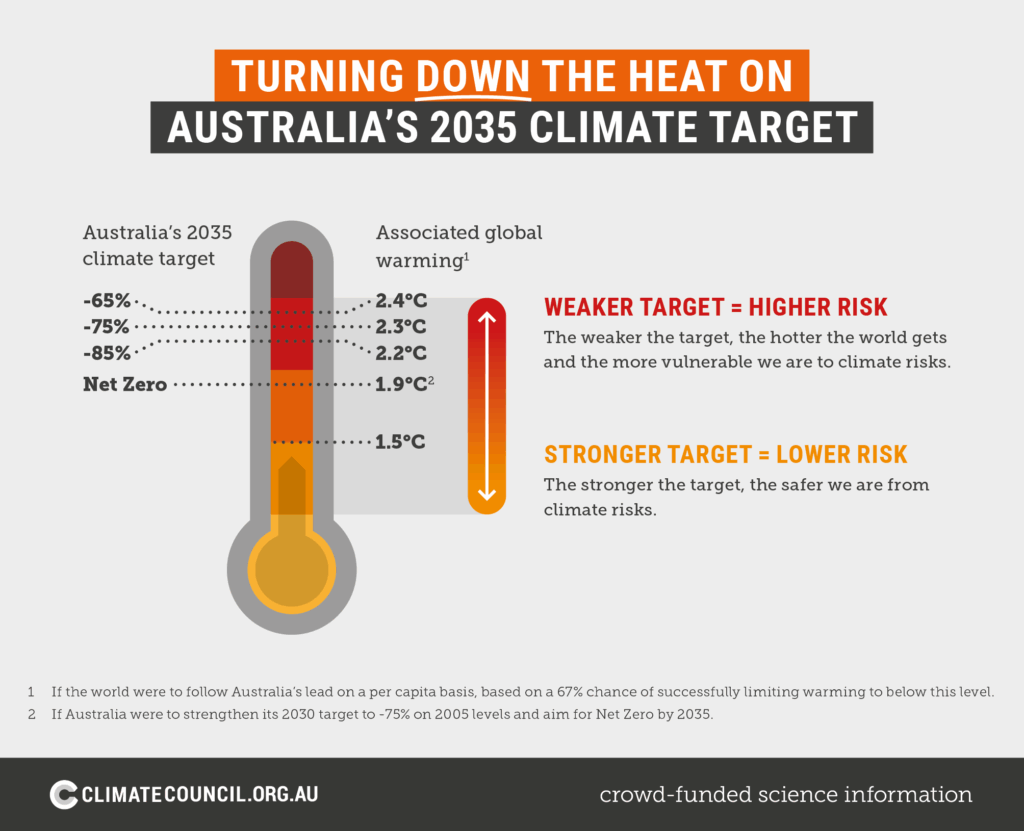
How does Australia compare to other countries?
Different climate targets are not necessarily comparable, as each country uses different baseline years and methodologies, and has different circumstances. To provide a meaningful comparison, climate pollution per person has been estimated.
At a 2035 climate target within the 62-70% range, Australia’s climate pollution will still be amongst the highest in the world, and almost double the current emissions per person globally. Australia’s emissions target would be higher than nations in Europe and Asia, and far exceeding many low-income nations.
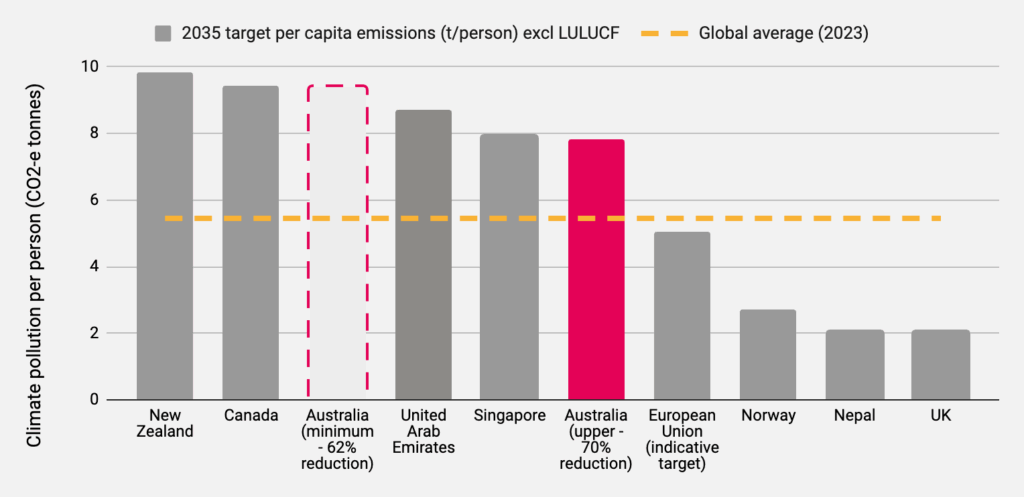
Note: Climate Council estimates excluding the land use, land use change and forestry (LULUCF) sector, using historical data and projections from official government sources.
Despite this, Australia is much better positioned than many other countries to make deep, rapid cuts to climate pollution with massive renewables potential, a skilled workforce, and abundant critical minerals and metal resources.
What are Australians calling for?
Two-thirds of Australians support a target of 75% or above and they’re backed by several unions, over 500 businesses including Canva, IKEA, and Unilever, dozens of social service organisations, community and religious groups, and climate and environment organisations like WWF, ACF, and us – the Climate Council. In fact, most organisations that have publicly named a desired target, have called for a target of at least 75%.
Where to from here?
Next week, world leaders including Prime Minister Anthony Albanese are heading to New York for the UN General Assembly, where leaders will have a platform to present their new 2035 climate targets. With Australia seeking to host COP31 – next year’s annual international climate conference – in partnership with Pacific Island Nations, all eyes will be on Australia.
To keep Australians safer from worsening climate harm, and unlock Australia’s economic opportunity, the Australian Government must set our target in law, put in place the policies today to meet 70% reduction and power past it.
Of course, we must also deal with our polluting fossil fuel exports. When burnt overseas, Australia’s coal, oil and gas exports release climate pollution equivalent to 2.5 times our own annual climate pollution. Phasing out these polluting exports would keep all of us safer. The first step is to end new and expanded fossil fuel projects.
Australia has a new 2035 target, now we need to put our shoulder to the wheel to achieve it.
¹ Climate Analytics, 2025 (>77% reduction); Climate Council 2024 (75% reduction); CSIRO, 2024 (75% reduction); Climateworks, 2023 (>75% reduction)

